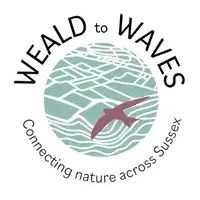Restoring Sussex’s kelp forests
By George Short - 17 July 2023
Off the coast of Sussex something amazing is happening. Two years ago the pioneering Sussex Nearshore Trawling Byelaw came into place, pushing bottom-towed trawling 4km off the West Sussex Coast. Trawling is a fishing practice that drags heavy fishing gear across the seabed. Due to the impacts of the 1987 storm and a proliferation in trawling afterwards, a 170km2 kelp forest has been decimated in our waters. Older Sussex-based readers may remember seaweed stacked up on our beaches after storms (see image below of Worthing Beach in the 1960s). Younger readers will not because 96% of our kelp forest has been lost. A rich, diverse, wonderful ecosystem was destroyed just meters from our busy coastal towns.
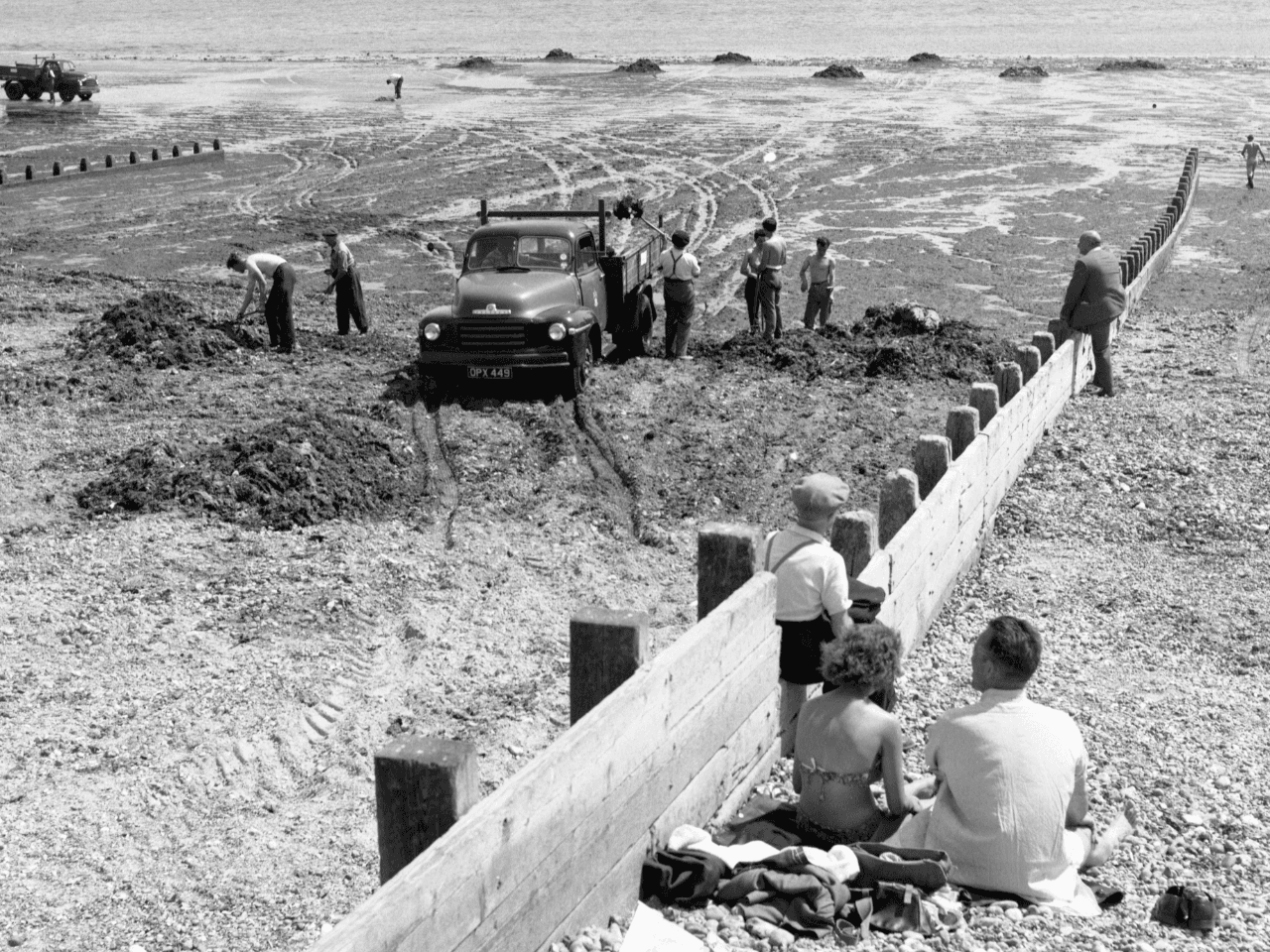
If fully restored a kelp forest off the Sussex Coast could capture the carbon emissions equivalent to 66 million miles driven in a family diesel or the carbon emissions of 7,235 homes.
The term ‘out of sight, out of mind’ has been used to describe this loss – but since the implementation of the landmark byelaw a huge wave of attention has been given to our coastline and seas, reflected in its crucial place in Weald to Waves’ landscape scale initiative. Sir David Attenborough spearheaded the original ‘Help Our Kelp’ campaign which led to 1,500 people writing in support of the new byelaw – since then a group called Sussex Underwater formed – created by local divers – sharing the wonders of Sussex marine life through social media.
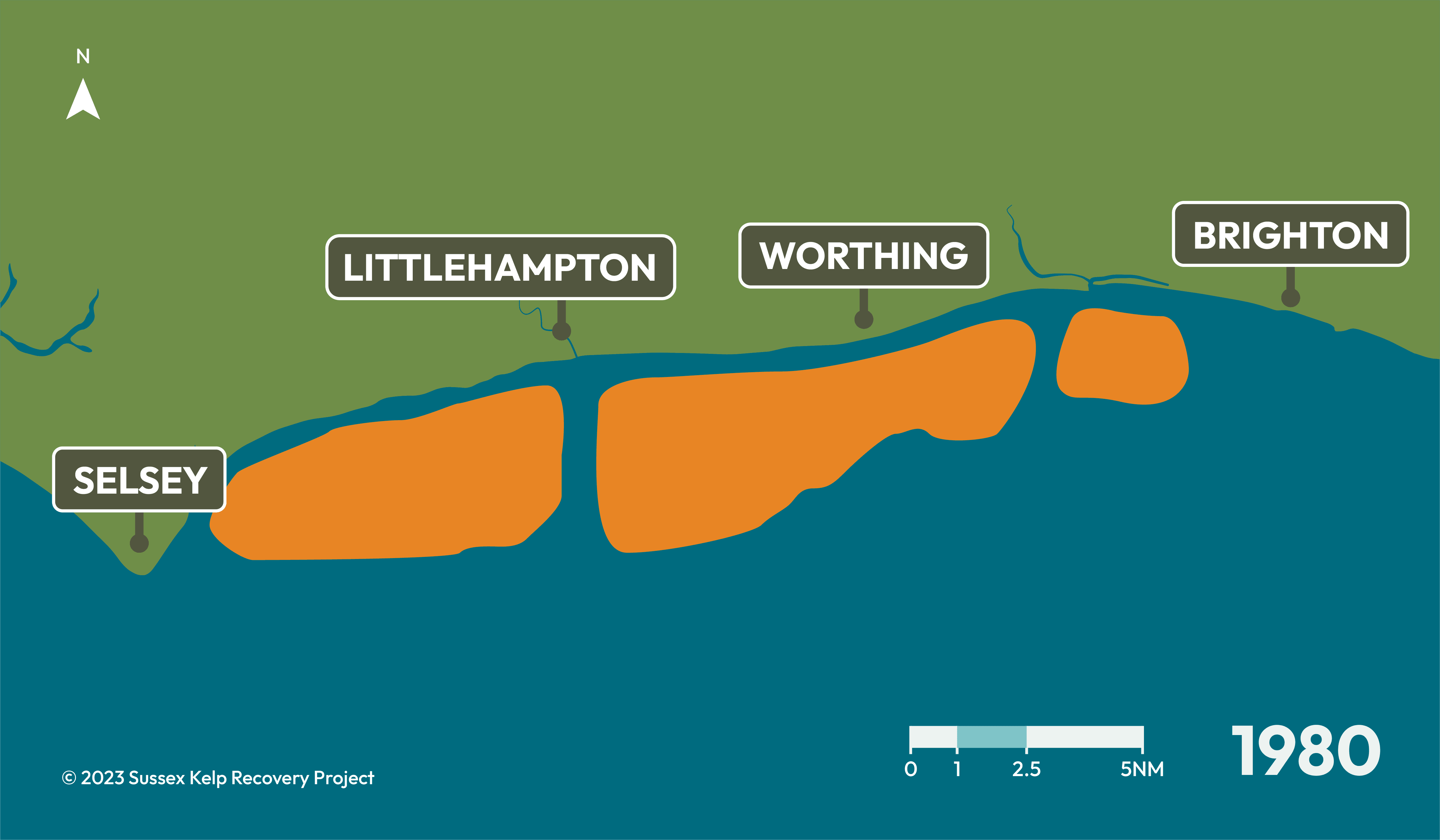
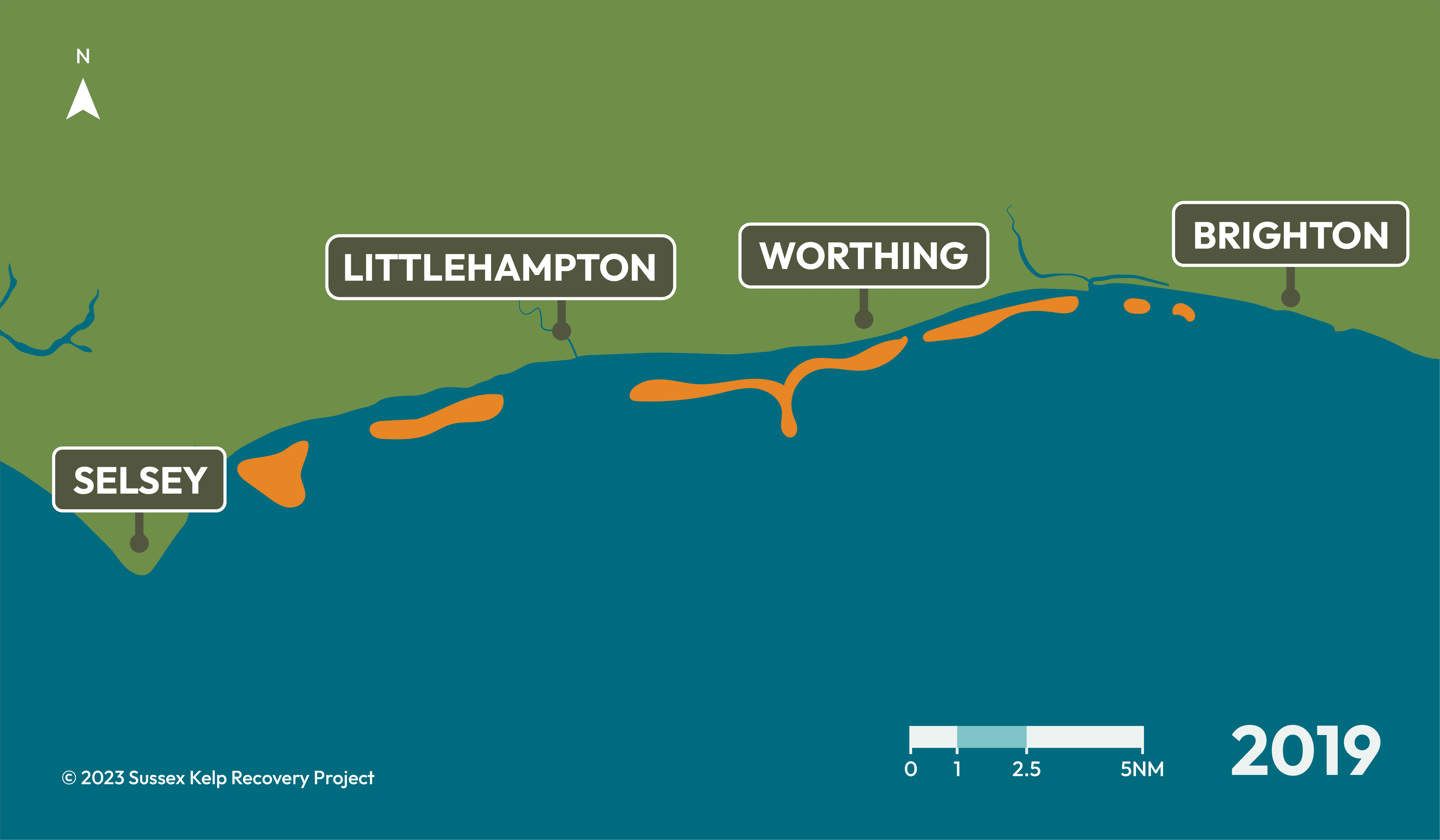
The Sussex Kelp Recovery Project is focused on the journey of the kelp recovery, ensuring that alongside the anecdotal information from divers, fishers and the citizen science contributions from local communities, we also have the formal academic monitoring and benchmarking of the changes happening on our seabed.
Two years in there is no active intervention to reseed the kelp – much like at Knepp – this is a nature-led approach. What will the marine ecosystems naturally do once the main pressure is removed? The changes are now starting to happen. A huge expansion in mussel-beds (where previously there was only a barren seabed) and many reports of increased diversity and abundance of species – most notably lobsters.
Local diver Eric Smith, part of the Sussex Underwater team, notes, “Vast mussel beds are binding the seabed back together with large plaice feeding on them. The kelp is holding its own and many other things are coming back, like soft and hard corals and anemones. The inshore rockpools are teeming with life such as hermit crabs that have been almost non-existent in the last ten years, with blennies and many more creatures for the kids to find and wonder over. As for the fish life, I filmed the first electric ray I had seen for 40 years, and trigger fish have turned up in several spots. Also, large sting rays are back in numbers from Selsey to Worthing.”
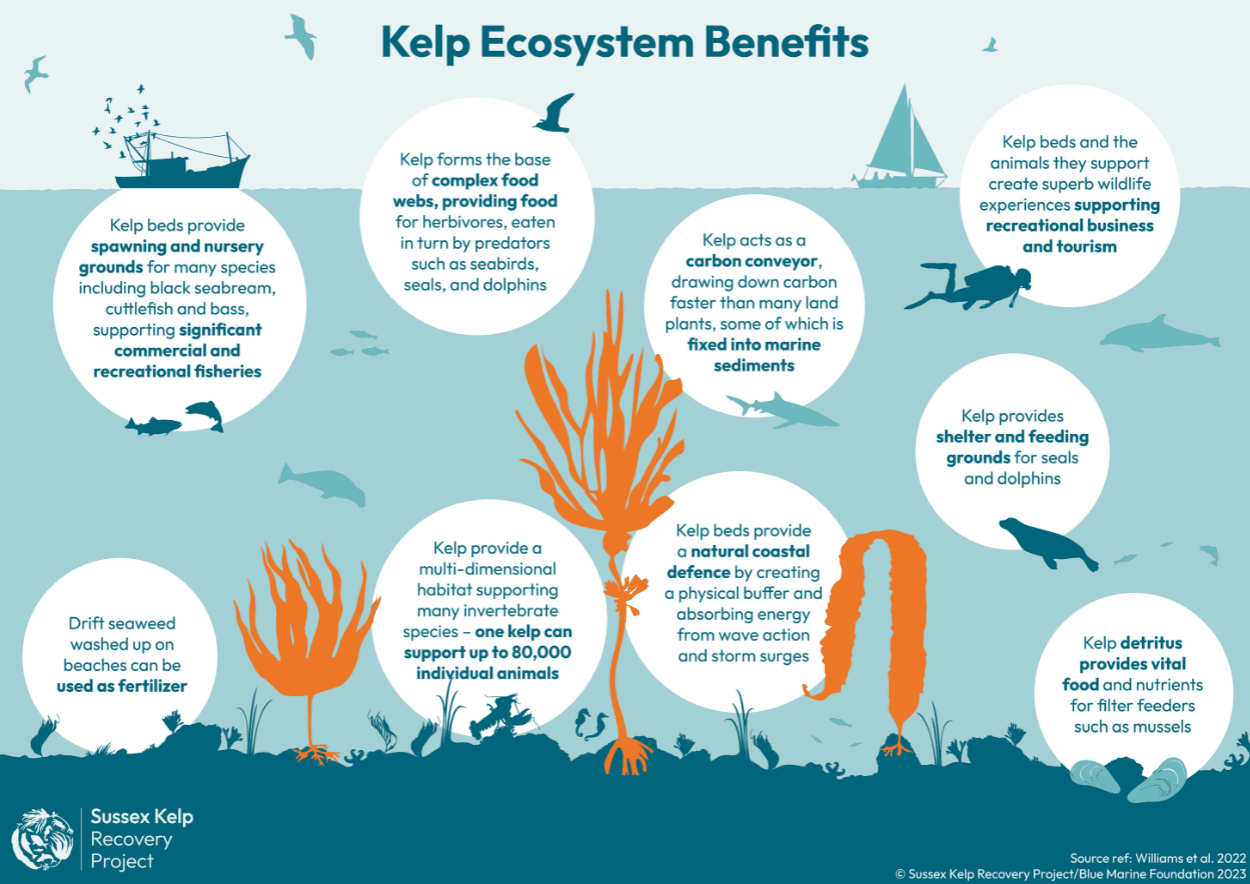
The divers’ reports are accompanied by Sussex Inshore Fisheries and Conservation Authority monitoring work, which involves undertaking annual transects with a towed underwater camera, as well as an array of ecological and socio-economic monitoring from academic institutions and NGOs.
Marine recovery elsewhere on the south coast has had spectacular results (Lyme Bay) and this journey is beginning in Sussex. We know that there are other factors that could be impacting the return of kelp, like sediments, nutrient levels or temperature, and we are not just aiming to understand these impacts – but also to work collectively to reduce threats where we can. Weald to Waves, encapsulating at least 3 Sussex river catchments will no doubt lead to improvements in the quality of water coming into our seas.
If you see kelp on a Sussex beach or at sea, please send us the information through our citizen science app and grow our understanding of our Sussex coastal waters.
George Short, Living Seas Officer, Sussex Wildlife Trust
Learn more
Read more about the work of the Sussex Kelp Recovery Project and the impact reports here.
Watch the Sussex Kelp Recovery Project’s 6 month science update video (15mins) to learn more about the project
Learn to identify and report sightings of kelp when you are out and about on the beach this summer.

